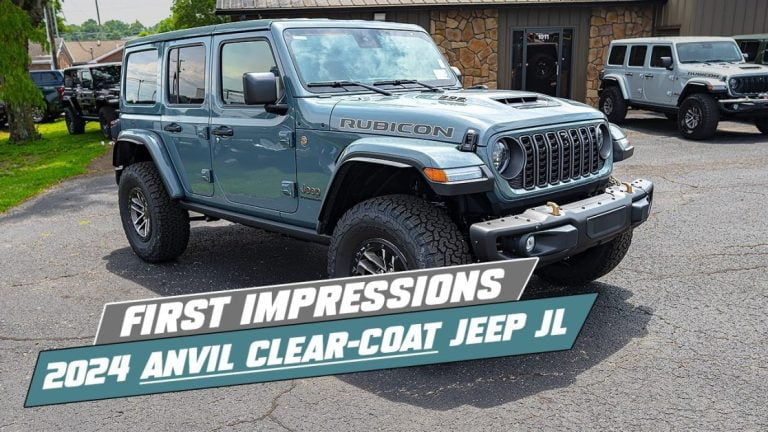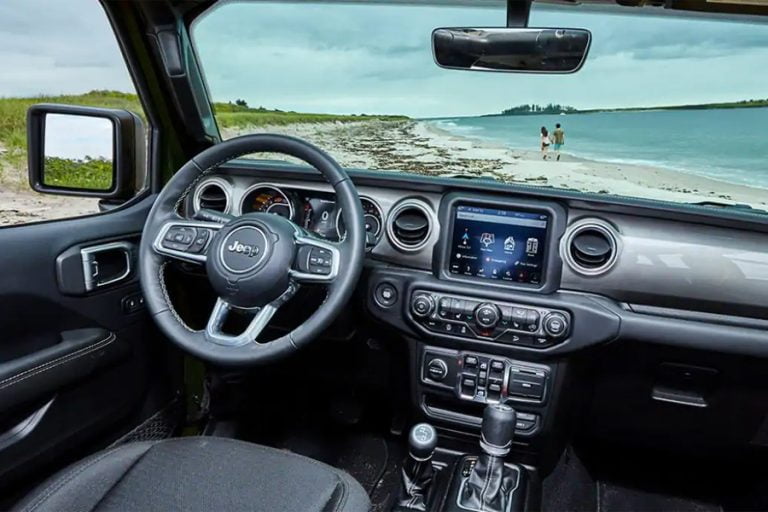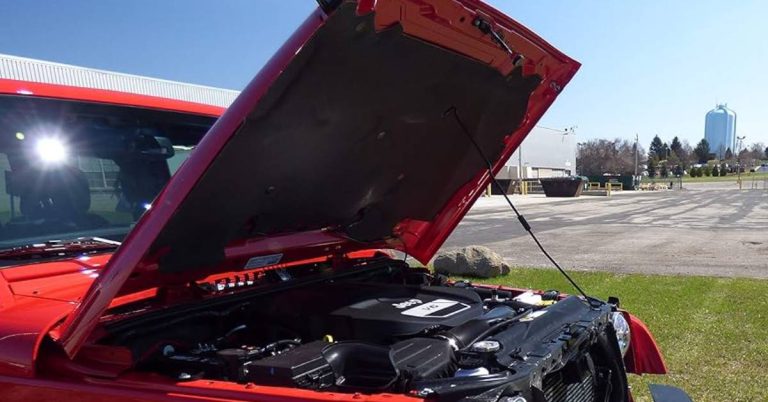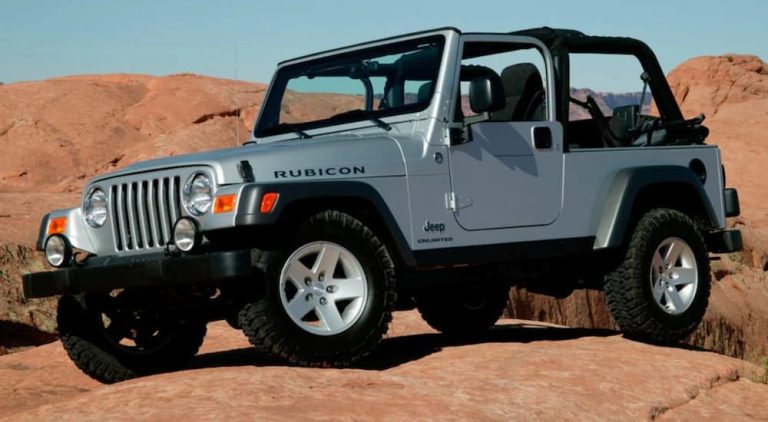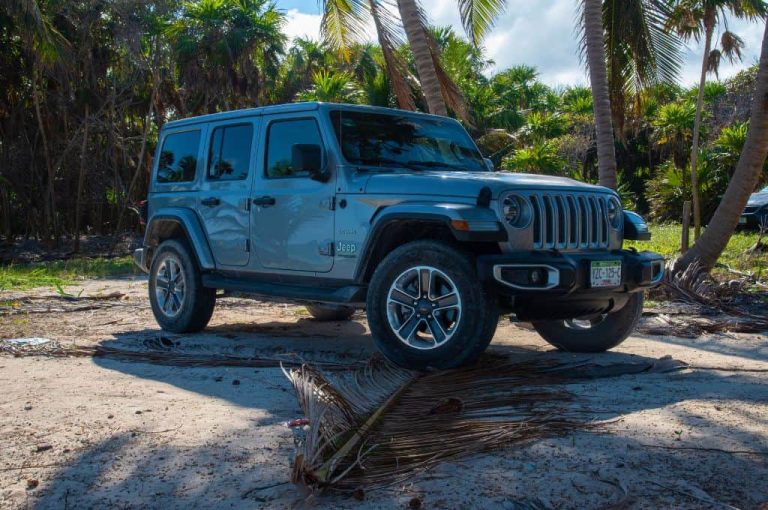What to Look for When Buying a Used Jeep Wrangler? Essential Tips for Smart Buyers
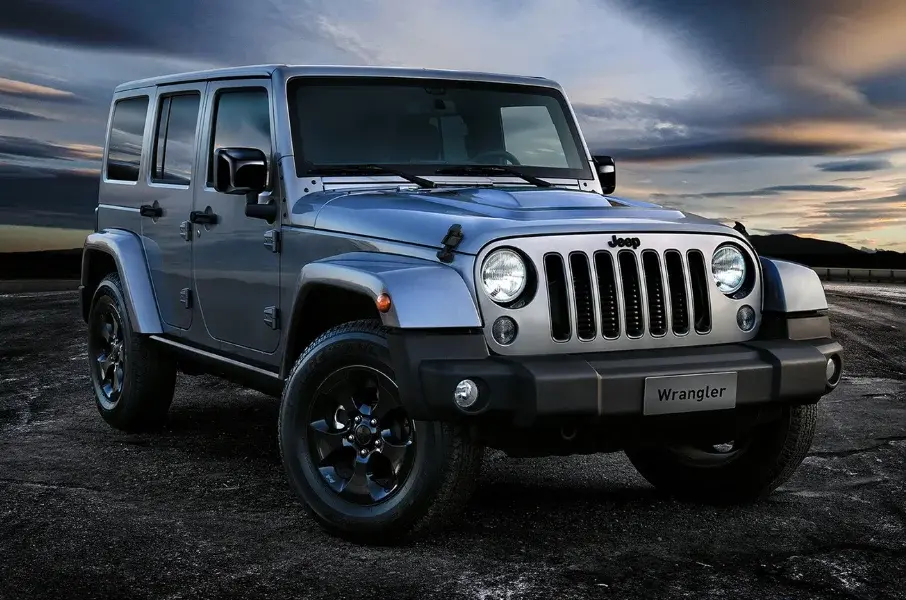
Thinking of buying a used Jeep Wrangler?
You’re in for an adventurous ride, my friend.
But before you set off on your off-road journey, there are a few crucial things you need to keep in mind.
From rust to rattles, leaks to modifications, this guide will point you towards all the red flags you should be on the lookout for.
So buckle up, because we’re about to embark on a thrilling quest to find your dream Wrangler.
what to look for when buying a used jeep wrangler
When buying a used Jeep Wrangler, there are several key factors to consider.
First, it’s important to check for any issues or damages, such as rust on the exterior and undercarriage, as well as any leaks.
Investigate any modifications made to the Jeep and ask for the service history to determine if it was regularly maintained.
During the test drive, pay attention to the transmission, ride smoothness, and test the brakes and accelerator.
Additionally, consider the mileage, off-road usage, number of previous owners, and any aftermarket modifications or additions.
Key Points:
- Check for any issues or damages, including rust and leaks
- Investigate any modifications and ask for service history
- Pay attention to transmission, ride smoothness, brakes, and accelerator during test drive
- Consider mileage, off-road usage, number of previous owners
- Look for any aftermarket modifications or additions
- Evaluate the overall condition and maintenance history of the vehicle
Check this out:
💡 Did You Know?
1. The Jeep Wrangler was originally designed as a military vehicle during World War II, and its distinct features such as the seven-slot grille and round headlights were inspired by the military Willys MB.
2. When buying a used Jeep Wrangler, check for signs of water damage, as these vehicles have a high probability of encountering rough terrains and water crossings, which can impact their electrical systems.
3. The iconic Jeep Wrangler comes in various versions, including two-door and four-door models. However, the four-door version, known as the Wrangler Unlimited, was introduced in 2007 as a response to customer demands for increased interior space.
4. A unique feature of the Jeep Wrangler is its removable doors and roof, perfect for enjoying open-air adventures. When buying a used Wrangler, make sure to inspect the condition of these removable parts, as they may have experienced wear and tear over time.
5. The Jeep Wrangler holds its resale value exceptionally well in comparison to other vehicles in its segment. This is partly due to its loyal fanbase and reputation for reliability, making it a sought-after vehicle even in the used car market.
Value And Benefits Of Buying A Used Jeep Wrangler
Buying a used Jeep Wrangler can be an excellent investment for several reasons.
1. Cost Savings: Purchasing a used vehicle allows you to save a significant amount of money compared to buying new. Jeep Wranglers, like many other cars, experience rapid depreciation in value as soon as they are driven off the lot. By opting for a used Jeep Wrangler, you can avoid the initial depreciation and potentially get more bang for your buck.
2. Versatility: One of the main reasons for the enduring popularity of Jeep Wranglers is their versatility. They are renowned for their off-roading capabilities, allowing you to conquer even the most challenging terrains. Whether you are an avid outdoor enthusiast or simply value the freedom of exploring off the beaten path, a Jeep Wrangler can provide you with a thrilling and off-road-ready experience.
3. Reliability and Low Cost of Maintenance: Another significant advantage of buying a used Jeep Wrangler is their reliability and low cost of maintenance. Jeep Wranglers are known for their durability and ability to withstand harsh conditions. With proper care and regular maintenance, a used Jeep Wrangler can serve you well for many years to come. Additionally, the availability of affordable parts and a strong aftermarket community make repairs and modifications relatively inexpensive.
4. Resale Value: Furthermore, used Jeep Wranglers tend to hold their value well. Their iconic design and reputation for ruggedness make them highly sought after in the used car market. This means that when it comes time to sell or trade in your Jeep Wrangler in the future, you can expect to get a good return on your investment.
- Cost savings compared to buying new
- Versatility for off-roading experiences
- Reliability and low maintenance costs
- Strong resale value
A used Jeep Wrangler can offer cost savings, versatility, reliability, and strong resale value.
Importance Of Checking For Issues And Damage
While buying a used Jeep Wrangler, it is crucial to inspect the vehicle thoroughly for any issues or damages. Rust is a significant concern as it can compromise the structural integrity of the vehicle. Pay close attention to the main body panels, doors, and hood, as these areas are particularly prone to rust. Extensive rust damage should prompt seeking a professional opinion or considering another vehicle.
Inspecting the undercarriage is essential to understanding how well the previous owner cared for the Jeep. Rust and damage in this area can indicate neglect or improper maintenance. A thorough examination will help determine the overall condition of the Jeep and identify potential future issues.
Rust: A Red Flag For Structural Integrity
When buying a used Jeep Wrangler, rust is a crucial aspect to consider. Rust not only affects the aesthetic appeal of the vehicle, but it can also compromise its structural integrity.
As mentioned earlier, check the main body panels, doors, and hood for any signs of rust. Small patches of surface rust can be normal, especially in an older Jeep Wrangler, but extensive corrosion should raise alarm bells.
Keep in mind that rust can spread, and what might seem like a minor issue could escalate into a major problem. Pay close attention to areas that are prone to rusting, such as the lower parts, fenders, and corners. If you notice bubbling paint or flaking metal on these areas, it is advisable to seek a professional inspection or consider exploring other options before making a purchase.
Remember that repairing rust can be both costly and time-consuming, so it is important to thoroughly assess the severity of any rust damage before proceeding with a purchase. While minor surface rust can be addressed relatively easily, extensive rust may require extensive repairs or even the replacement of crucial structural components.
- Check main body panels, doors, and hood for any signs of rust
- Pay attention to lower parts, fenders, and corners prone to rusting
- Look out for signs of bubbling paint or flaking metal
- Thoroughly assess and consider the severity of rust damage before proceeding with a purchase.
Inspecting The Undercarriage For Care And Maintenance
When purchasing a used Jeep Wrangler, inspecting the undercarriage is a vital step in understanding how well the vehicle has been cared for. The undercarriage can reveal important information about the previous owner’s maintenance practices and the overall condition of the Jeep.
Start by thoroughly examining the frame for any signs of rust or damage. Rust along the frame can be indicative of poor maintenance or exposure to harsh conditions. Additionally, check for signs of off-road damage, such as dents or dings, as it can give you insight into the Jeep’s history and potential issues it may have encountered.
Inspect the suspension components, including the shocks, control arms, and springs, for any signs of wear or damage. Worn-out or damaged suspension parts can significantly affect the Jeep’s ride quality and overall performance. Similarly, examine the exhaust system for any leaks, rust, or signs of damage.
Do not forget to inspect the drivetrain components, such as the axles and driveshaft, for any signs of wear or leaks. These components are essential for the Jeep’s off-road capabilities, and any issues can lead to costly repairs in the future. Finally, pay attention to the condition of the fuel lines and brake lines, as these play a vital role in ensuring safe and reliable operation.
By thoroughly inspecting the undercarriage, you can gain valuable insights into the previous owner’s maintenance practices and the overall condition of the Jeep. A well-maintained undercarriage is a good indication that the previous owner took proper care of the vehicle and increased the likelihood of a trouble-free ownership experience for you.
Tires: Insights Into The Vehicle’s History And Alignment
When evaluating a used Jeep Wrangler, taking a close look at the tires can provide important information about the vehicle’s history and potential alignment issues. The condition and wear pattern of the tires can tell a story of how the Jeep has been driven and maintained.
Start by inspecting the tread depth. Uneven wear across the tires may indicate an alignment issue and the need for realignment or suspension repairs. Additionally, excessive wear on the edges of the tires may suggest that the Jeep has been used primarily for off-roading or driven aggressively. On the other hand, even wear across the entire tread indicates consistent use and regular tire rotations, which is a positive sign.
Consider the type of tires fitted on the Jeep. If they are all-terrain or mud-terrain tires, it may indicate a previous owner who was enthusiastic about off-roading. While this can be a positive aspect for someone interested in off-road capabilities, it is essential to assess the condition of the tires and the amount of tread remaining.
Inspect the sidewalls of the tires for any signs of damage or bulges. These can indicate potential issues with the tire’s structural integrity, such as impact damage or a manufacturing defect. If you notice any significant damage or defects, it is advisable to consider replacing the tires or negotiating a lower price to account for the additional expense.
By closely evaluating the tires, you can gain insights into the vehicle’s history, the driving style of the previous owner, and potential alignment or suspension issues that may require attention.
- Inspect the tread depth for uneven wear
- Consider the type of tires and assess their condition
- Look for signs of damage or bulges on the sidewalls
Taking these steps will help you make an informed decision about the used Jeep Wrangler.
Identifying Leaks: A Blacklight Inspection
When purchasing a used Jeep Wrangler, it is crucial to carefully inspect for potential leaks that could indicate underlying issues. While some leaks are simple to fix, others may be an indication of more significant problems.
One effective method for identifying leaks is using a blacklight during the inspection. A blacklight can expose leaks that are not visible under normal lighting conditions, as certain fluids like coolant or oil fluoresce under UV light.
Start by examining the engine compartment under the hood. Thoroughly inspect the engine block, radiator, hoses, and other components for any signs of leaks, such as brightly glowing spots or stains. It’s important to pay attention to the levels of engine oil and coolant as unusually low levels can indicate leaks or consumption issues.
Moving on to the undercarriage of the Jeep, utilize the blacklight to search for any tell-tale signs of leaks. Check the areas around the engine, transmission, transfer case, differential, and exhaust system. Additionally, carefully inspect the fuel lines and brake lines for any evidence of leaks or seepage.
If you come across any leaks during the inspection, it is crucial to determine their source and assess the severity before proceeding with the purchase. Depending on the nature and extent of the leaks, you may need to consider additional repair costs, negotiate a lower price, or explore other Jeep Wrangler options.
Modifications: Consider Their Value For You
When purchasing a used Jeep Wrangler, it is crucial to investigate any modifications that have been made to the vehicle. While modifications can enhance the vehicle’s performance and aesthetics to align with your preferences, it is important to consider their value and potential impact on the overall ownership experience.
Start by determining the purpose of the modifications. Consider whether they were made for off-roading capabilities, aesthetics, or other purposes. Take note of modifications such as lift kits, aftermarket bumpers, upgraded suspension systems, or larger tires. While these modifications can enhance the Jeep’s off-road abilities, they may come with trade-offs in terms of ride comfort, fuel efficiency, and reliability.
Additionally, consider the reputation and quality of the aftermarket parts installed. Research reputable brands and inquire about the warranty and support available for those specific modifications. Cheap or poorly installed modifications can lead to reliability issues and potentially costly repairs down the line.
Keep in mind that while modifications may add to the visual appeal and performance of the Jeep, they may not necessarily increase its resale value. In some cases, heavily modified vehicles may have limited appeal in the used car market, making it important to carefully assess your preferences and potential future resale considerations.
Ultimately, the decision to purchase a modified Jeep Wrangler comes down to personal preference and how the modifications align with your needs and intended use of the vehicle. If you are unsure about the long-term implications and potential drawbacks of specific modifications, it is advisable to consult with experts or seek professional advice before making a final decision.
- Investigate any modifications made to the vehicle.
- Consider the purpose of the modifications.
- Take note of trade-offs with ride comfort, fuel efficiency, and reliability.
- Research reputable brands and their warranty and support.
- Be aware that modifications may not increase resale value.
- Assess personal preferences and intended use before purchasing.
- Consult with experts or seek professional advice if uncertain.
Maintenance History: A Window Into The Vehicle’s Care
When buying a used Jeep Wrangler, it is vital to inquire about the vehicle’s maintenance history to gain insight into how well it has been cared for by the previous owner. Regular maintenance is crucial for the Jeep’s longevity and can give you confidence in its overall condition.
Ask the seller for any service records or receipts they have for maintenance and repairs performed on the Jeep. This helps you understand if the previous owner stayed on top of routine maintenance, such as:
- Oil changes
- Fluid flushes
- Tire rotations
Regular maintenance is essential for optimal performance and reliability, so a well-documented maintenance history is an encouraging sign.
Inquire about any major repairs or modifications that have been done to the Jeep. Understanding the previous owner’s actions can give you an idea of how the Jeep has been used and potentially anticipate any issues that may arise in the future. If a used Jeep Wrangler has undergone extensive modifications or major repairs, it is advisable to have a trusted mechanic inspect the vehicle to ensure proper installation and functionality.
Furthermore, consider the mileage of the Jeep to gauge how extensively it has been used. Lower mileage typically suggests less wear and tear on the vehicle, but it is important to balance that with maintenance history. A Jeep with higher mileage but a comprehensive maintenance record is often a better option than a lower mileage vehicle with a limited maintenance history.
Lastly, inquire about any off-road usage the Jeep may have experienced. Off-roading can put additional stress on the vehicle’s components, including the suspension, drivetrain, and body. Understanding if and how extensively the Jeep was used for off-roading can help you anticipate potential issues that may arise and evaluate whether the vehicle has been adequately maintained to withstand these demanding conditions.
By gathering information on the Jeep’s maintenance history, you can make a more informed decision on whether a used Jeep Wrangler has been well-cared for and is likely to provide you with a reliable and enjoyable ownership experience.
- Inquire about service records and receipts for maintenance and repairs.
- Ask about major repairs or modifications on the Jeep.
- Consider the mileage of the Jeep.
- Inquire about any off-road usage.
FAQ
What to avoid when buying a used Jeep?
When purchasing a used Jeep, it is crucial to avoid overlooking any signs of suspension issues, such as worn-out parts or leaks in the seals. Additionally, a thorough inspection should be conducted to check for metal shavings in the oil, as this could hint at potential engine problems. It is also advisable to exercise caution with YJ- or TJ-generation vehicles that have surpassed 150,000 miles, as they may require professional evaluation at an auto shop. Earlier Jeep models should be approached with caution due to the possibility of problematic transmissions, blown head gaskets, and exhaust manifold cracks.
What is the best year Jeep Wrangler to buy used?
When considering a used Jeep Wrangler, each year has its own distinct features and improvements. If you’re looking for a balance between modern technology and affordability, the 2018 Jeep Wrangler might be the best choice. It offers updated design elements, improved fuel efficiency, and advanced safety features compared to previous models. However, if you prefer a more classic and rugged feel, the 2003 or 1997 Jeep Wrangler could be enticing options. These models are known for their simplicity and durability, making them popular choices among off-road enthusiasts. Ultimately, the best year Jeep Wrangler to buy used will depend on your personal preferences and budget.
What questions to ask when buying a used Jeep Wrangler?
When buying a used Jeep Wrangler, it is crucial to inquire about the vehicle’s history, ensuring that you have a clear understanding of any previous accidents or major repairs. Additionally, knowing the mileage is essential, as it can provide insight into the overall wear and tear of the vehicle. It is also important to inquire whether the Jeep has been used for off-roading, as this can impact the condition of the suspension, undercarriage, and other components. Understanding the ownership history will help you assess if the Jeep has had consistent maintenance and proper care. Finally, inquire about any aftermarket modifications, as these can affect the Jeep’s performance, warranty, and overall value.
How many miles is a lot for a used Jeep Wrangler?
The mileage range for a used Jeep Wrangler can vary greatly depending on factors such as maintenance, driving conditions, and previous use. On average, a used Wrangler can be expected to have anywhere from 100,000 to 280,000 miles. However, it is important to keep in mind that every vehicle is unique, and its lifespan can differ. It is advisable to thoroughly inspect and consider other factors besides mileage when purchasing a used Wrangler in Terre Haute.

